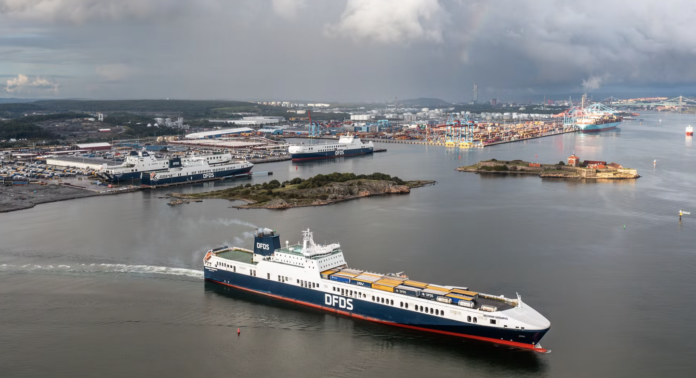Port of Gothenburg, North Sea Port, and the Danish international shipping and logistics company DFDS have welcomed the Port of Antwerp-Bruges to the Green Shipping Corridor, strengthening the project’s green ambitions.
By 2030, two ammonia-fuelled ro-ro vessels are expected to operate on routes between Sweden and Belgium. The ports will intensify efforts on electrification and ammonia bunkering, potentially establishing the world’s first green ammonia shipping corridor for freight vessels.
The Green Shipping Corridor spans 2,500 kilometres, connecting the northernmost and southernmost points between Sweden and Belgium. The corridor aims to promote near-zero emission transport and has the potential to link 11 European countries via sea, land, and rail routes, stretching from Norway in Northern Europe to Spain in the South.
In this corridor, the ports of Gothenburg, North Sea Port, and Antwerp-Bruges will serve as key transportation hubs and significant zones for industrial activity.
The goal is to have at least two DFDS ammonia-fuelled vessels operating on the Green Shipping Corridor by 2030, aligning with the company’s ambition to deploy six low- and near-zero-emission vessels by the same year.
These ammonia-fuelled vessels will be supported by electric trucks and rail transport on land, as well as onshore power supplies. Consequently, the ports are intensifying efforts to facilitate electric terminal operations and ensure safe ammonia bunkering. Additionally, the partners plan to start producing significant amounts of renewable electricity.
The three original partners signed a Memorandum of Understanding (MoU) in 2022 to collaborate on decarbonizing the shipping corridor between Sweden and Belgium and creating a scalable solution. The inclusion of the Port of Antwerp-Bruges in this coalition strengthens this commitment.
DFDS has applied for funding for a total of four ammonia-fuelled vessels. If the funding is granted, the project, including port electrification, is expected to reduce CO2e emissions by 328,000 tons per year, which corresponds to around 11% of DFDS’s scope 1 greenhouse gas emissions compared to 2023.
“The Port of Gothenburg is already in the early stages of developing operating regulations for a safe and efficient handling and bunkering of ammonia-propelled vessels. We are also working on establishing an ammonia value chain, to be able to facilitate everything needed for ammonia-propelled vessels calling and bunkering in the port on a regular basis in 2030 and beyond,” stated Patrik Benrick, head of Strategic Development & Innovation at Port of Gothenburg.







